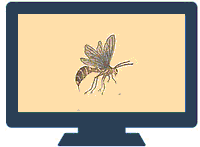Entomology, Department of

Department of Entomology: Distance Master of Science Projects
Date of this Version
2019
Document Type
Project
Citation
University of Nebraska-Lincoln Department of Entomology Online Masters Program Final Project. Lincoln, Nebraska.
Abstract
The original definition of Integrated Pest Management (IPM) was introduced by Stern et al. in 1959 as Integrated Control. It was defined as applied pest control which combines and integrates biological and chemical control (Stern et al. 1959). Entomologists began exploring insect management alternatives to reduce reliance on insecticides in the 1950’s after resistance and pest resurgence in agriculture was first noted. Today, the European Union follows a definition of IPM largely inspired from the definition given by the Food and Agriculture Organization of the United Nations (FAO) (Barzman et al. 2015). Integrated Pest Management means the careful consideration of all available pest control techniques and subsequent integration of appropriate measures that discourage the development of pest populations and keep pesticides and other interventions to levels that are economically justified and reduce or minimize risks to human health and the environment. IPM emphasizes the growth of a healthy crop with the least possible disruption to agro-ecosystems and encourages natural pest control mechanisms (FAO.org, 2019). The goal of IPM is a holistic and synergistic approach. It integrates preventive methods using different approaches. It focuses on biological, agronomic, mechanical, and physical principles, only resorting to selective pesticide usage when other tools are not successful (Barzman et al. 2015).
Greenhouses growing plants for research and development efforts have high plant densities with non-stop single crop production systems. This characteristic alone encourages the spread of pests. Furthermore, well fertilized and irrigated crops are often more sensitive to outbreaks of pests than outdoor crops (Gullino et al., 2002). While agronomic crops are the target of many pests, the main pests in a greenhouse environment are sucking pests such as whiteflies, aphids, thrips and mites. These are typically polyphagous insects, and are generally more problematic in greenhouses than in the field because of the ideal warm and moist protected environment, as well as the isolation from their natural enemies (Tian, 2000). These arthropods can develop and reproduce successfully throughout the year without hibernation under controlled conditions, producing more generations per year and causing more serious damage than under open field conditions (Tian, 2000). The greenhouse “acceptance threshold” is very low on agronomic crops with a R&D status. Nevertheless, integrated pest management within a controlled environment follows the same principles and management strategies to crops grown on fields. The following will be discussed: pest biology and identification, scouting and monitoring, cultural practices, biological control and chemical control.


Comments
Copyright 2019 Evy Z Santiago